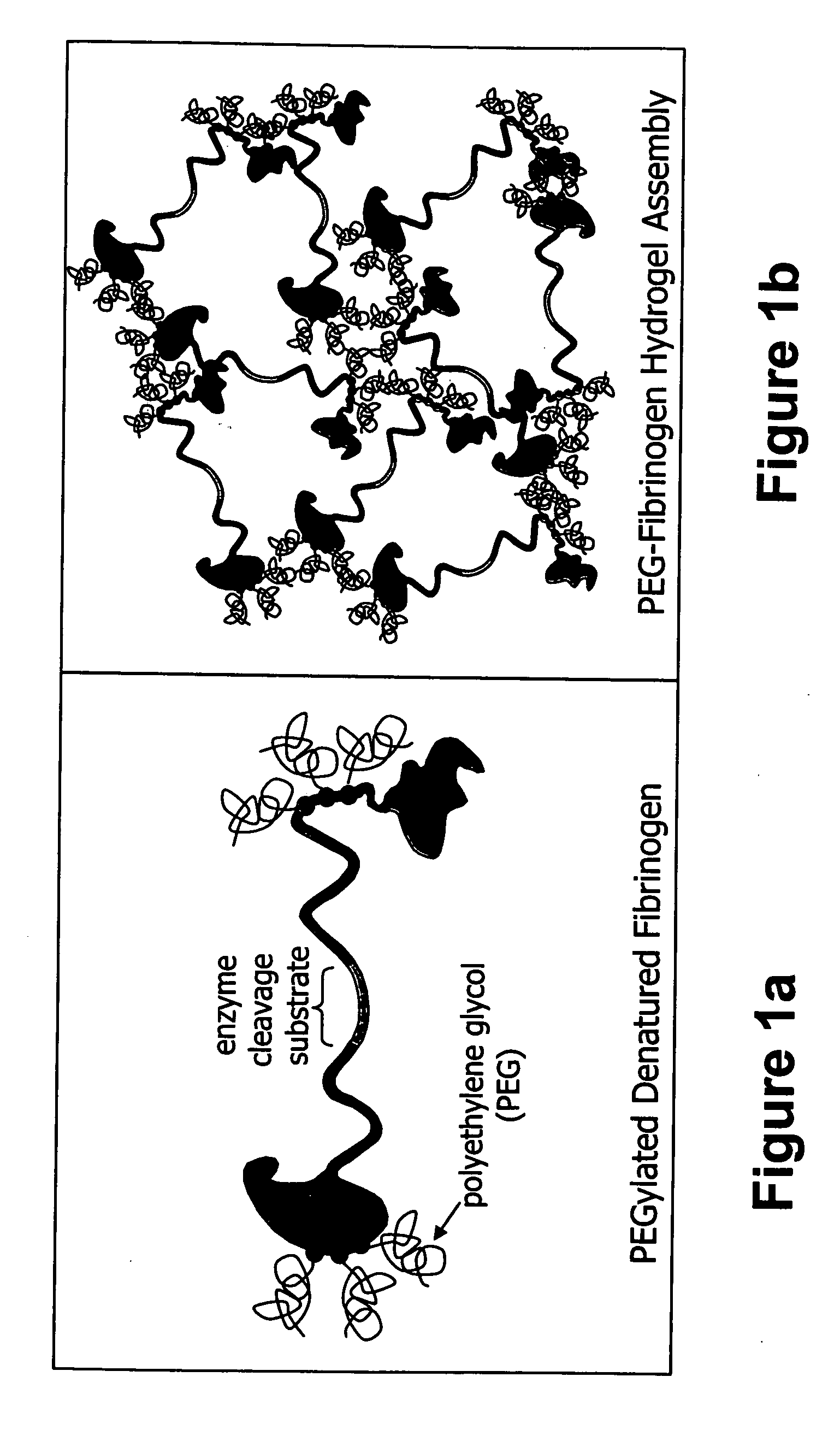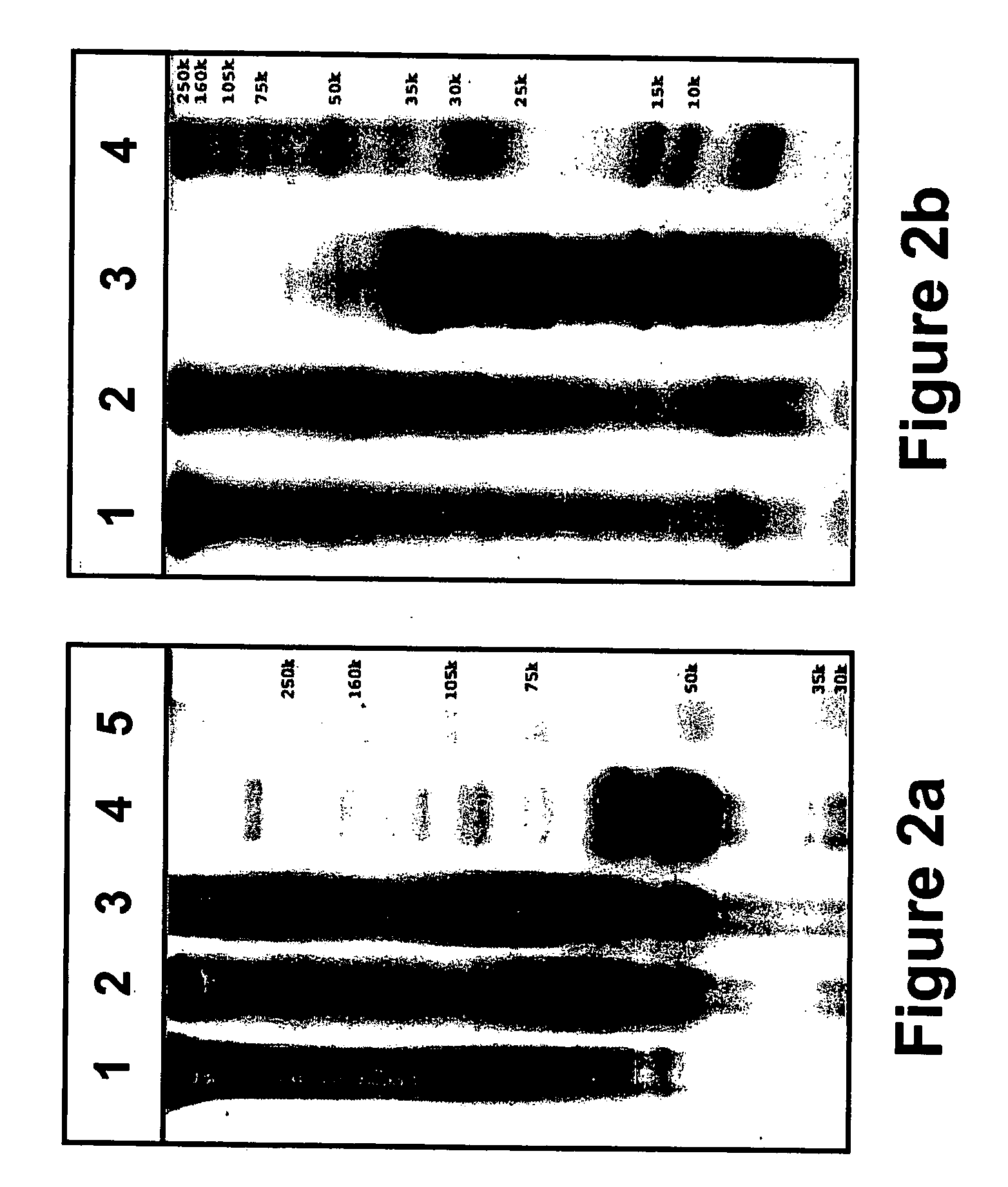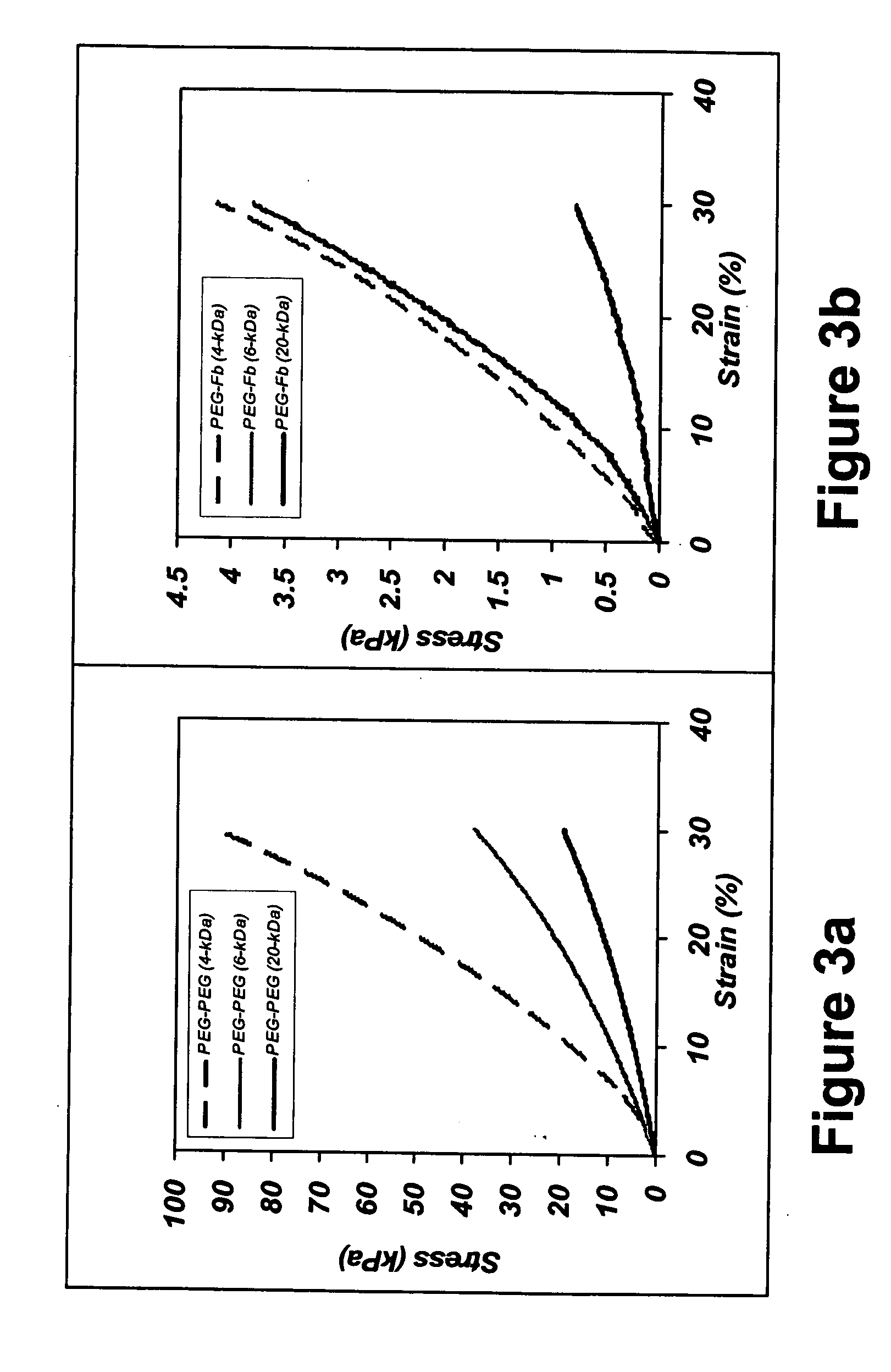Matrix composed of a naturally-occurring protein backbone cross linked by a synthetic polymer and methods of generating and using same
a technology of naturally occurring protein and polyethylene glycol, which is applied in the direction of cell culture supports/coatings, peptide/protein ingredients, depsipeptides, etc., can solve the problems of uneven cell seeding of prefabricated materials, limited cell migration into the depth of synthetic scaffolds, and the possibility of prefabricated tissue constructs
- Summary
- Abstract
- Description
- Claims
- Application Information
AI Technical Summary
Benefits of technology
Problems solved by technology
Method used
Image
Examples
example 1
Generation of PEG-Fibrinogen Hydrogels
[0197] Tissue engineering scaffolds with controllable mechanical properties and adequate biofunctional signals were generated from PEG and fibrinogen. Briefly, denatured fibrinogen fragments were PEGylated with PEG-diacrylates, mixed with photoinitiator and exposed to UV light to form a hydrogel material in the presence of a cell suspension. The degradability of the PEG-fibrinogen scaffold was further tested by enzyme-mediated proteolysis, as follows.
[0198] Materials and Experimental Methods
[0199] Synthesis of PEG Diacrylate (PEG-DA)—PEG-diacrylate (PEG-DA) was prepared from linear PEG, MW=4-kDa, 6-kDa, and 20-kDa (Fluka, Buchs, Switzerland), essentially as described elsewhere (Lutolf and Hubbell, 2003; Elbert D L., et al., 2001). Briefly, acrylation of PEG-OH was carried out under Argon by reacting a dichloromethane (DCM) (Aldrich, Sleeze, Germany) solution of the PEG-OH with acryloyl chloride (Merck, Darmstadt, Germany) and triethylamine (F...
example 2
The PEG-Fibrinogen Hydrogels Support Cell Spreading and Extension
[0228] To test the capacity of the PEG-fibrinogen hydrogels to promote the expansion and differentiation of cell cultures, cell of bovine aortic endothelial cells and smooth muscle cells were cultured on various PEG-based hydrogels, as follows.
[0229] Materials and Experimental Methods
[0230] In vitro cell-culture studies—Bovine aortic smooth muscle cells (BSMCs) from young donors were isolated and cultured according to a modified protocol of Oakes et al., 1982. The BSMCs were cultured up to 6th passage in Dulbecco's Modified Eagle Medium (DMEM) (Gibco, U.K.) containing 10% fetal bovine serum (FBS) (Biological Industries, Israel), 1% penicillin-streptomycin (Biological Industries), and 1% L-glutamine (Gibco). PEG hydrogels containing BSMCs were made by mixing a PBS cell suspension and PEGylated fibrinogen precursor solution containing Igracure™ photoinitiator to make a 10% (w / v) solution with 1.5×106 cells / ml. Aliquot...
example 3
In Vivo Regeneration of Bone Using the PEG-Fibrinogen Gelrin™ Scaffold
[0238] To test the potential of the PEG-fibrinogen scaffold material to facilitate tissue regeneration, a critical size tibial defect was introduced in rats and the Gelrin™ scaffold was implanted at the site of surgery (tibia diaphysis).
[0239] Materials and Experimental Methods
[0240] Animals—Female Sprague-Dawley rats (age 3-4 months) were adapted to animal cage life for 5 days prior to the experiment. The weight of the animal was monitored during this period to ensure stability and proper adaptation. The animals were fed and watered daily without restrictions.
[0241] Introduction of a critical size tibia defect—The animals were anesthetized with a combination of Ketamine (120 mg / kg) and Xylazine (17 mg / kg). During the surgical procedure the animals were placed on a warm plate to maintain body temperature (and prevent hypothermia). The right tibia was shaved and wiped with polydine tincture solution. The mid-po...
PUM
| Property | Measurement | Unit |
|---|---|---|
| Fraction | aaaaa | aaaaa |
| Fraction | aaaaa | aaaaa |
| Fraction | aaaaa | aaaaa |
Abstract
Description
Claims
Application Information
 Login to View More
Login to View More - R&D
- Intellectual Property
- Life Sciences
- Materials
- Tech Scout
- Unparalleled Data Quality
- Higher Quality Content
- 60% Fewer Hallucinations
Browse by: Latest US Patents, China's latest patents, Technical Efficacy Thesaurus, Application Domain, Technology Topic, Popular Technical Reports.
© 2025 PatSnap. All rights reserved.Legal|Privacy policy|Modern Slavery Act Transparency Statement|Sitemap|About US| Contact US: help@patsnap.com



